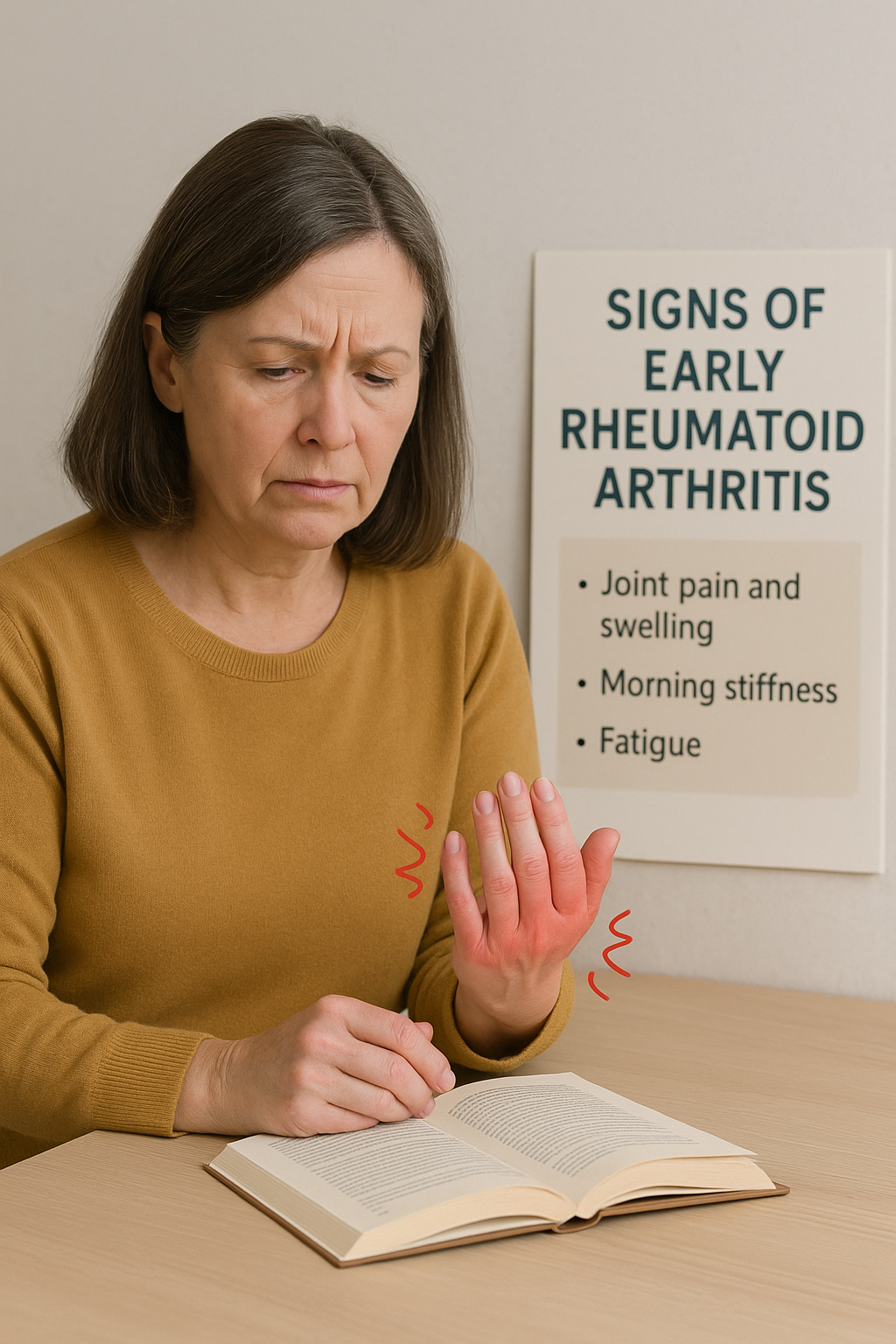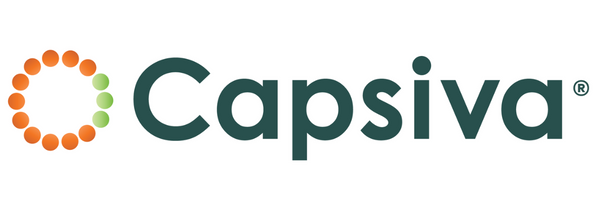
Signs of Early Rheumatoid Arthritis: What to Look for and How to Find Relief
Share
Rheumatoid arthritis (RA) can begin subtly, often mistaken for fatigue, stiffness, or general aches that come and go. But catching the early signs of rheumatoid arthritis can make a world of difference in how you manage pain, preserve mobility, and protect your joints from long-term damage.
Understanding the symptoms, patterns, and progression of RA is crucial — especially because early treatment and lifestyle adjustments can help minimize discomfort and improve overall quality of life.
Let’s explore what the early stages of RA look like, the differences between seronegative and seropositive rheumatoid arthritis, and how natural, homeopathic solutions like Capsiva are providing safe and effective relief for many people managing arthritis pain.
What Is Rheumatoid Arthritis?
Rheumatoid arthritis is an autoimmune disorder that primarily targets the joints. Unlike osteoarthritis — which results from wear and tear — RA occurs when the immune system mistakenly attacks healthy joint tissue. This leads to chronic inflammation, which causes pain, swelling, and stiffness that can worsen over time.
In RA, inflammation often affects smaller joints first — such as fingers, wrists, and toes — before progressing to larger joints like the knees, elbows, and shoulders. Over time, this inflammation can erode cartilage and bone, leading to joint deformity and loss of mobility if left untreated.
Because RA is progressive, recognizing the early warning signs is key to managing the condition effectively and preventing further damage.
Early Signs of Rheumatoid Arthritis
RA tends to develop gradually, and its early symptoms can easily be mistaken for general fatigue, overuse, or even aging. However, certain distinctive signs set rheumatoid arthritis apart from other conditions:
-
Persistent Morning Stiffness
One of the earliest and most common symptoms of RA is joint stiffness that lasts longer than 30 minutes in the morning. This stiffness often improves with movement but returns after periods of rest. -
Symmetrical Joint Pain
RA typically affects joints on both sides of the body equally — for example, both wrists or both knees. This symmetry is one of the clearest indicators that the pain may be inflammatory rather than mechanical. -
Swelling and Warmth Around Joints
Inflammation causes joints to appear swollen and feel warm to the touch. This tenderness can make daily activities, like gripping objects or walking, increasingly difficult. -
Fatigue and Low-Grade Fever
Because RA is an autoimmune condition, your body’s immune response can lead to overall fatigue, loss of appetite, and sometimes a mild fever. Many people describe feeling “run down” long before significant joint pain develops. -
Numbness or Tingling in the Hands
Inflammation in the wrists can put pressure on nerves, leading to sensations similar to carpal tunnel syndrome. -
Small Joint Pain That Spreads
Pain in small joints, like those of the fingers and toes, often marks the beginning of rheumatoid arthritis. Over time, the discomfort can spread to larger joints as inflammation progresses.
If you’ve noticed one or more of these symptoms — particularly persistent stiffness, symmetrical pain, or swelling — it’s worth consulting a healthcare provider to discuss possible early-stage RA.
Seronegative vs. Seropositive RA
Not all rheumatoid arthritis is the same. Doctors classify RA into two primary categories based on blood test results:
-
Seropositive Rheumatoid Arthritis: This form occurs when the blood contains rheumatoid factor (RF) or anti-CCP antibodies, markers that indicate the immune system is attacking the joints. Seropositive RA is often more aggressive and may cause visible deformity over time.
-
Seronegative Rheumatoid Arthritis: In this type, patients test negative for RF and anti-CCP antibodies, but still experience joint inflammation and pain. Symptoms are usually similar to seropositive RA, though progression may be slower.
Regardless of the type, early diagnosis and consistent management can make a significant difference in maintaining mobility and comfort.
How Early Detection Can Help
Catching RA in its early stages allows individuals to start treatments that slow progression, reduce inflammation, and maintain joint health. Early intervention also minimizes long-term complications such as cartilage damage, bone erosion, and reduced range of motion.
In addition to medical care, many people find success using natural pain relief options alongside their doctor-recommended plans. That’s where Capsiva comes in — an all-natural, homeopathic pain relief cream designed to ease joint pain safely and effectively.
Finding Natural Relief with Capsiva
While traditional medications can provide short-term relief, they often come with unwanted side effects, such as digestive discomfort, dependency, or skin irritation. Capsiva takes a different approach — harnessing the power of nature to fight inflammation and soothe pain without risk.
Capsiva Homeopathic Pain Relief Cream uses capsaicin, the active compound in chili peppers known for its pain-blocking abilities. When applied topically, capsaicin interacts with TRPV1 pain receptors, temporarily reducing their sensitivity and signaling fewer pain messages to the brain.
Unlike other capsaicin products that can cause burning or irritation, Capsiva’s homeopathic refinement process neutralizes harsh effects, leaving only the benefits. Users often report faster relief, less stiffness, and improved mobility with regular use — all without odor, greasiness, or side effects.
Other advantages of Capsiva include:
-
All-natural, plant-based ingredients
-
FDA-compliant formulation
-
No odor, no burn, and no mess
-
Non-greasy, fast absorption
-
Safe for daily use
It’s no wonder so many people living with rheumatoid arthritis pain turn to Capsiva as part of their holistic care routine.
Real Relief, Real Results
For those living with early rheumatoid arthritis, managing pain naturally has never been more accessible. People across the country are discovering that a drug-free, homeopathic pain relief option can help them stay active and comfortable — without relying on harsh medications.
By combining healthy lifestyle habits with Capsiva’s natural relief, individuals can regain control of their daily routines and find comfort in knowing they’re supporting their bodies safely.
Here are some additional steps that can help manage early RA symptoms:
-
Engage in low-impact exercise like yoga or swimming to keep joints flexible.
-
Maintain an anti-inflammatory diet rich in omega-3s, leafy greens, and turmeric.
-
Use gentle stretches to reduce stiffness.
-
Apply Capsiva daily to manage ongoing pain and inflammation naturally.
Conclusion
Recognizing the signs of early rheumatoid arthritis is the first step toward effective, lifelong management. While joint pain, stiffness, and swelling may be the earliest warnings, the right natural approach can make a lasting difference.
With its homeopathic ingredients, fast-absorbing formula, and FDA-compliant safety, Capsiva offers a breakthrough in how people approach arthritis pain relief — empowering you to live more freely, move more confidently, and manage discomfort naturally.
Visit Capsiva.com to learn more about how Capsiva can help you find real, risk-free relief from joint pain.
